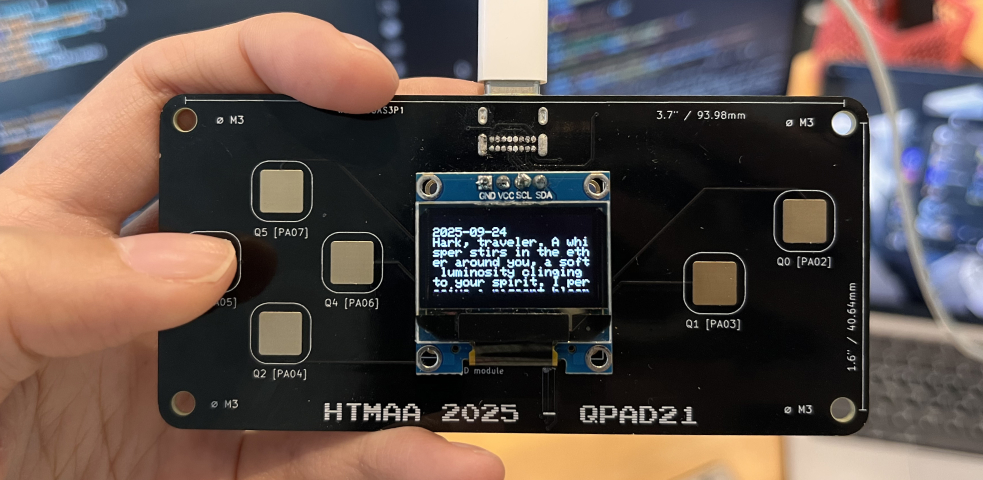Result
Flow
The project combines hardware (touch sensors + OLED display) with a Python server that connects to Google’s Gemini LLM. The interaction flow is:
- User presses the start pad → Arduino shows today’s date and requests an initial fortune.
- Python requests Gemini for a short daily fortune and sends it back.
- Arduino displays the fortune on its OLED screen.
- Arduino sends the tone request + current fortune to Python.
- Python rewrites the same fortune in the requested tone and sends it back to Arduino.
- This creates an interactive loop where the fortune evolves with the user’s choices.
Fortunes
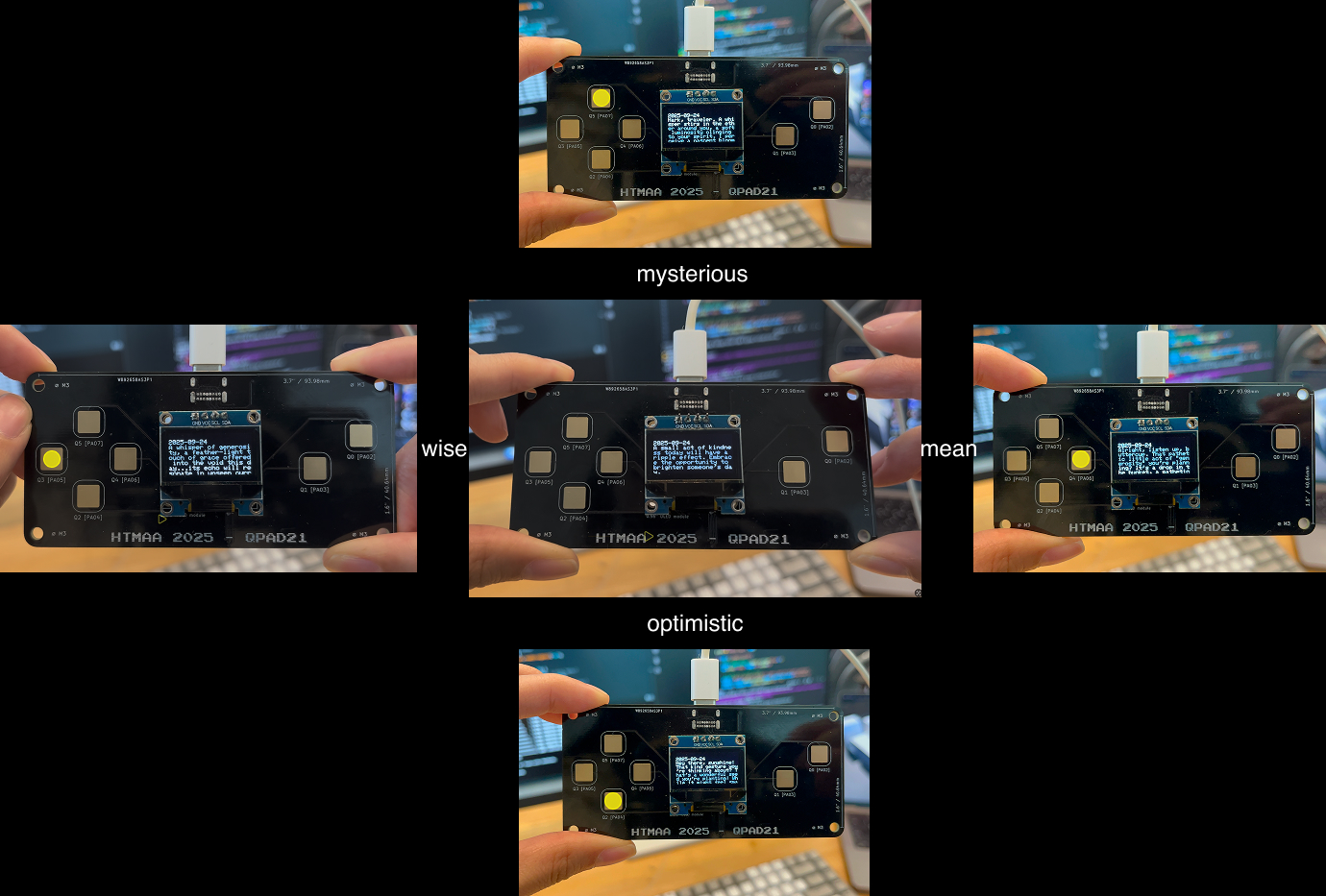
- Original::A small act of kindness today will have a ripple effect. Embrace the opportunity to brighten someone's day.
- Wise::A whisper of generosity, a feather-light touch of grace offered into the void this day...its echo will resonate in unseen currents. Embrace the chance to become a glimmer in the gathering shadows.
- Mean::Alright, listen up, buttercup. That pathetic little act of "generosity" you're planning? It's a drop in the bucket, a pathetic attempt to look good.
- Optimistic::Hey there, sunshine! That kind gesture you're thinking about? That's a wonderful seed you're planting! While it might feel small now, it has the potential to blossom into something
- Mysterious::Ah, dear one, I sense a gentle benevolence within you. That impulse toward kindness, that selfless act you contemplate... nurture it. For it is a seed, small perhaps in its present form,
Understanding / Making the Electronics
Electronics
HUGE THANKS TO CBA Section AMAZING TA ✨Quentin✨
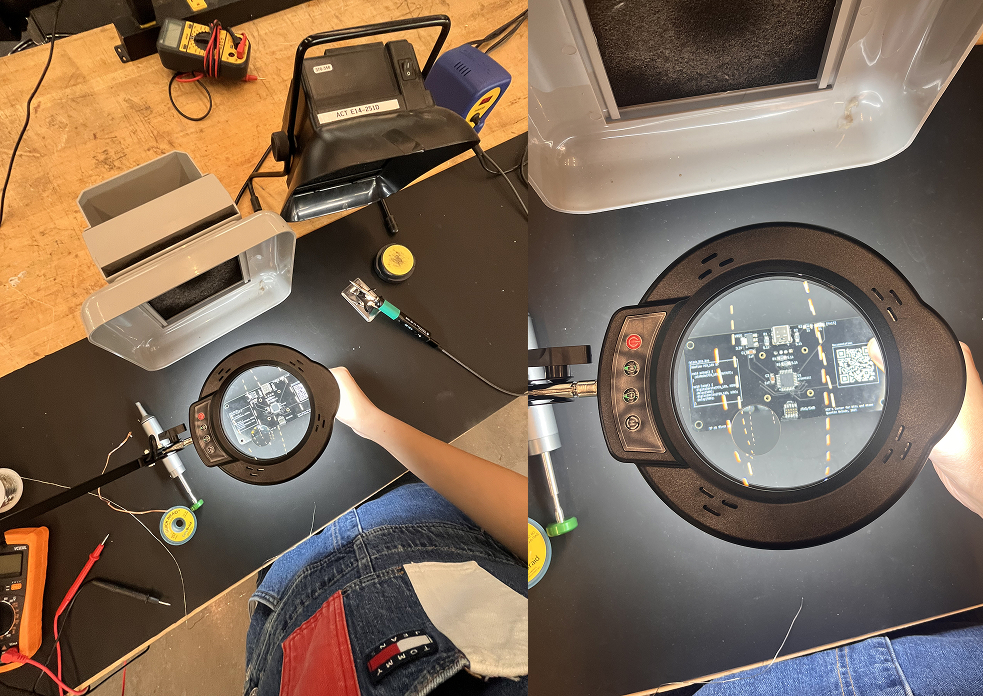
The design of the electronics board is here
The arduino board setting is here
- Board: QPAD21
- Touch pads: Used for detecting user input (start + 4 tones)
- OLED Display (SSD1306, 128x64): To show fortunes and status messages
- LED: Simple indicator when touches are active
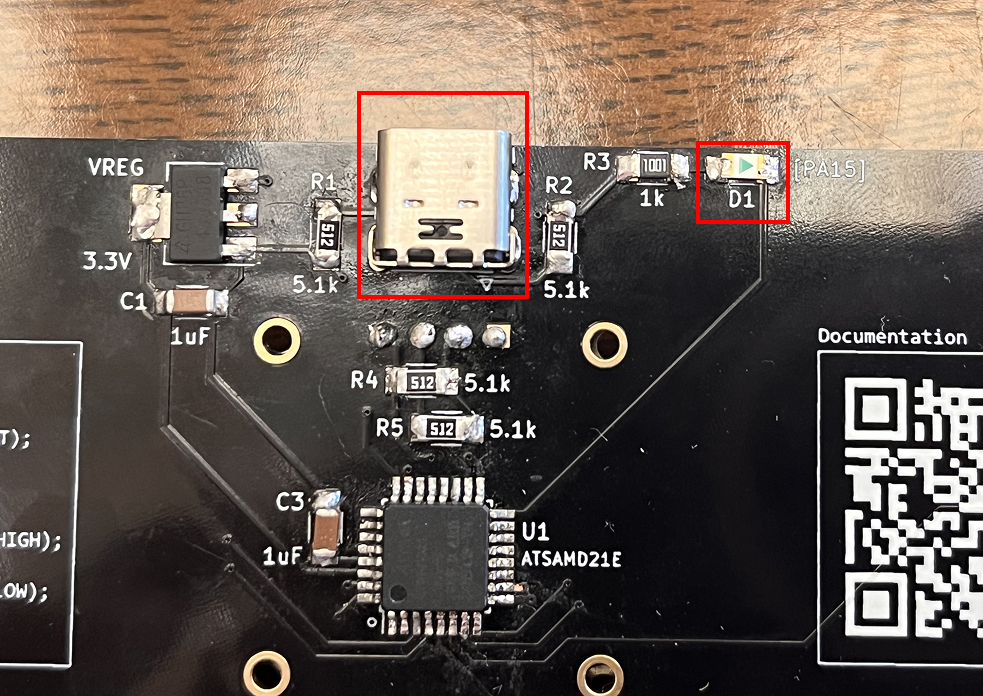
I putted the LED in the wrong direction and had to detatch them and do again. Also, since USB connection is really fragile, needed to re-solder it.
Programming
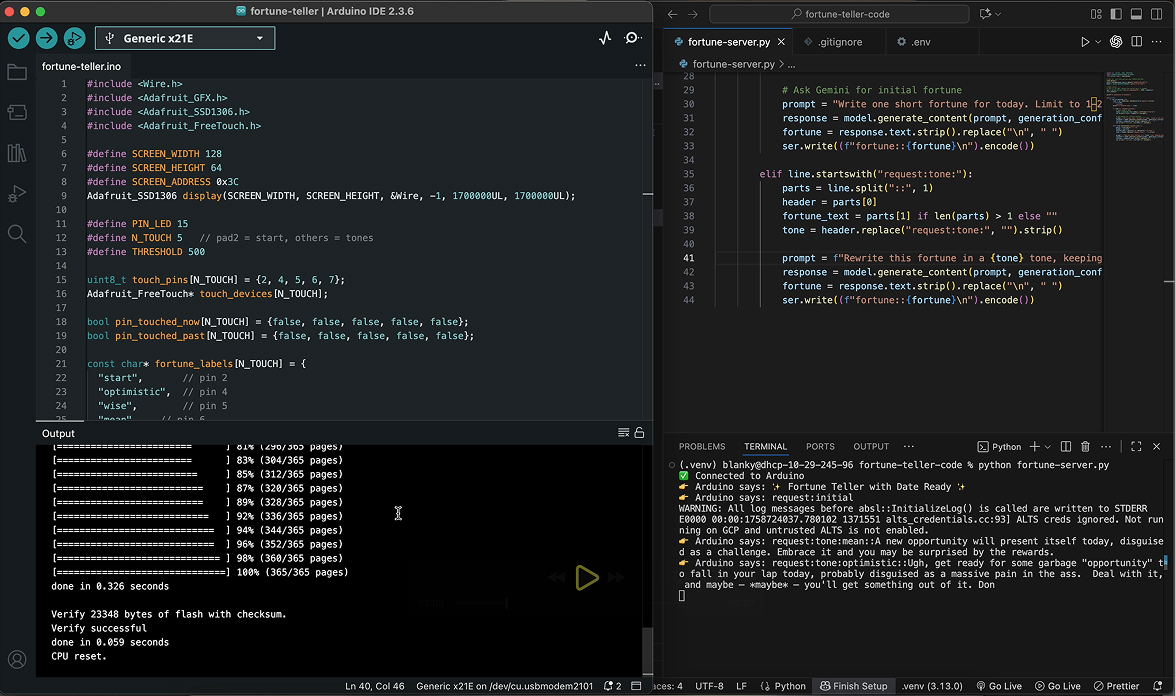
You can find the source code from here
Arduino IDE Programming
- Touch Detection: Using the Adafruit_FreeTouch library, raw touch sensor values are read and converted into “pressed / not pressed” states.
- When an event happens (start pressed, tone requested), Arduino sends structured messages over Serial to ask Python server to call the Gemini request.
- Then, listens for the responses from the Python, and show on the OLED display.
Python Programming
The Python script acted as a bridge between Arduino and Gemini. Since boards cannot directly call Gemini (they lack HTTPS + OAuth support), I offloaded LLM requests to a Python server, using Serial as a bridge.
- Serial Communication (via pyserial)
ser = serial.Serial('/dev/cu.usbmodem2101', 9600, timeout=1) while True: if ser.in_waiting > 0: line = ser.readline().decode(errors="ignore").strip() if not line: continue print("👉 Arduino says:", line)- Opens the Arduino USB port (COM3 on Windows, /dev/ttyUSB0 or /dev/cu.usbmodemXXXX on Mac/Linux).
- Reads messages from Arduino and writes back responses.
- Gemini API Calls (via google-generativeai)
elif line.startswith("request:tone:"): parts = line.split("::", 1) header = parts[0] fortune_text = parts[1] if len(parts) > 1 else "" tone = header.replace("request:tone:", "").strip() prompt = f"Rewrite this fortune in a {tone} tone, keeping meaning the same: {fortune_text}" response = model.generate_content(prompt, generation_config={"max_output_tokens": 40}) fortune = response.text.strip().replace("\n", " ") ser.write((f"fortune::{fortune}\n").encode())- When it receives request:initial: -> Send today’s date back.
- Generate a one-sentence fortune using Gemini.
- When it receives request:tone:...::fortune: -> Rewrite the fortune in the requested tone (optimistic, wise, humorous, mysterious).
- Environment Setting
- Used a .env file with python-dotenv to keep the API key secure.
- Virtual environment (venv) was set up to install google-generativeai and pyserial.
- Gemini Prompt
- Gemini often produced long texts, so adjusted prompt and added the setting.
prompt = f"Rewrite this fortune in a {tone} tone, keeping meaning the same: {fortune_text}" response = model.generate_content(prompt, generation_config={"max_output_tokens": 40})
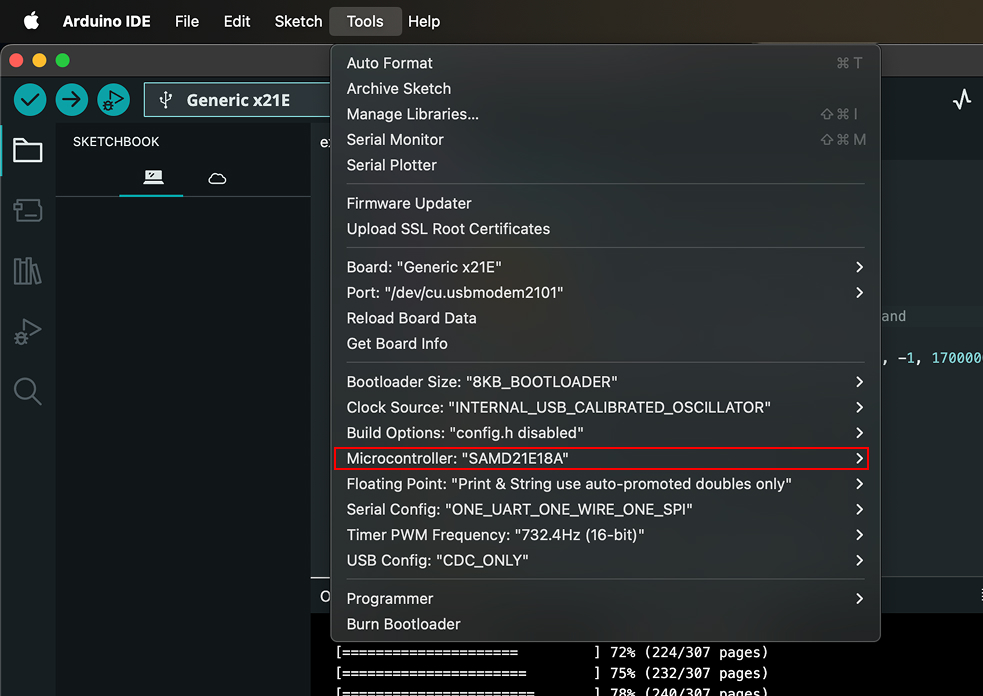
Selected the wrong microcontroller profile during program upload, which corrupted the flash and required re-downloading the flash to the board.
Appendix
Learning from Failures
- Put the LED Diodes in the wrong direction!
- Soldering is challenging!
-
Should shut down the Arduino serial monitor to run the Python server. Otherwise it shows:
raise SerialException(msg.errno, "could not open port {}: {}".format(self._port, msg)) serial.serialutil.SerialException: [Errno 16] could not open port /dev/cu.usbmodem2101 - I tried using PlatformIO instead of the Arduino IDE to make it easier to connect with the Gemini Python server, but unfortunately PlatformIO doesn’t support our board. Sun has documented the issue here.
Files
- Arduino Code
- Python Server Code to Connect with Gemini API
- To run the code, add .env file with your Gemini API Key in the python server folder.
